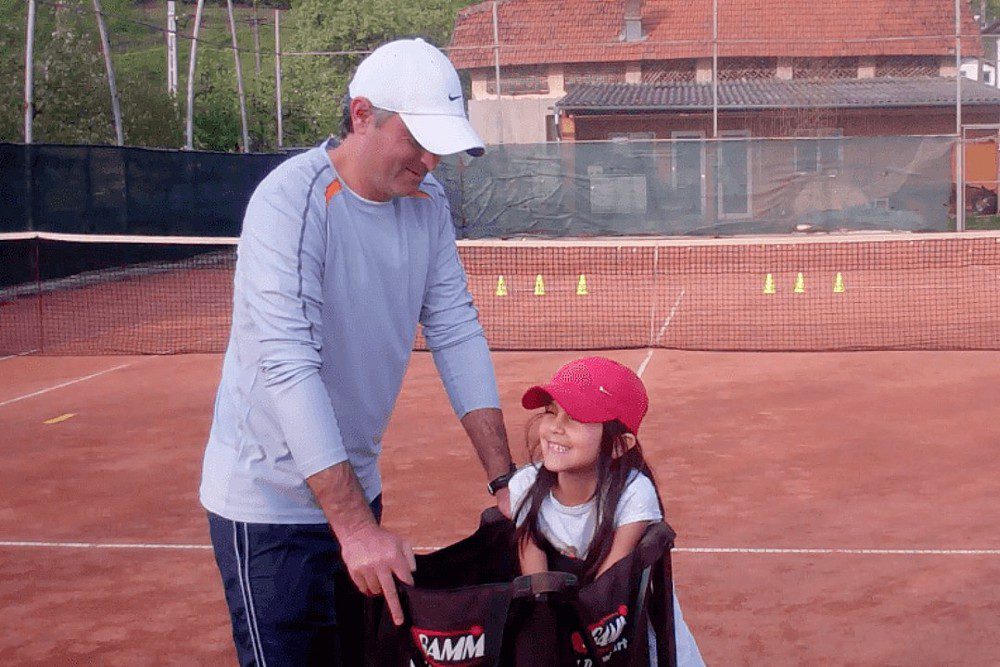When teaching tennis to a new and beginning student, I have always emphasized a combination of fun and technique.
When a new student books me for a lesson, in the first 5-10 minutes I try to find out about them: why they want to learn tennis, what they know about it, and if they have ever tried tennis before.
For example, someone might want to learn so that they can play with their family. Or they consider tennis a good way to stay in shape. Or they are just being brought in by their parents. Whatever the reason, it is good to ask them – you’ll find some interesting answers for why people pick up a tennis racquet.
After you familiarize yourself with your new student, it is good to let them know a “very” little bit about yourself – do not bore them too much about your life. Just keep it to simply letting them know your name, and how long you’ve enjoyed playing and teaching tennis, and enthusiastically letting them know how glad you are to have the opportunity to teach tennis.
To keep this article short, I’d suggest that in the first lesson you should introduce your students to the following:
1. Court dimensions and names of the lines – it is important for new players to learn the names of the lines (e.g. baseline, singles side lines, service line, etc.) so that when you ask them to practice from a certain spot on the court, they should know their way about the court.
2. Racquet introduction – explain to your student the different parts of the racquet: head, neck, and handle. If you want, you can show them the basic grips without getting into much detail.
3. Introduce some hand-eye coordination drills to test their physical skills.
4. Begin by demonstrating and teaching the basic forehand groundstroke technique followed by drills and fun games that put into practice the skills they learn.
These are the main points that a student should learn in the first lesson. Make sure to keep it fun and try as much as possible to connect with the students by listening to them and allowing them to ask you questions during the lesson.
If your student is a child, encourage them all the time and praise their effort. At the end of the class, have a little prize for them (e.g. small candy, stickers, etc.). Kids love that and will continue coming to your lessons when you show that you care.
If your student is an adult, again, listening to their needs and allowing them to ask questions is important. Adults, more than kids, are interested in detailed techniques and… a good workout. Do drills that make them “break a sweat” from time to time. They should leave your classes smiling. (:
Have fun on the court and write to me if you have any questions, below.

Cosmin Miholca
Certified Tennis Coach
Check out my work at WebTennis24 where I share with you my best video tennis lessons, drills and tips for players, coaches and tennis parents.


0 Comments